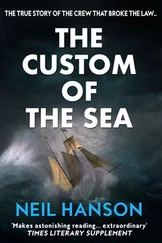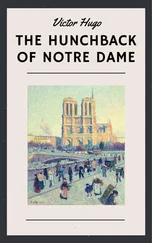Victor Hanson - The End of Sparta
Здесь есть возможность читать онлайн «Victor Hanson - The End of Sparta» весь текст электронной книги совершенно бесплатно (целиком полную версию без сокращений). В некоторых случаях можно слушать аудио, скачать через торрент в формате fb2 и присутствует краткое содержание. Жанр: Исторические приключения, на английском языке. Описание произведения, (предисловие) а так же отзывы посетителей доступны на портале библиотеки ЛибКат.
- Название:The End of Sparta
- Автор:
- Жанр:
- Год:неизвестен
- ISBN:нет данных
- Рейтинг книги:3 / 5. Голосов: 1
-
Избранное:Добавить в избранное
- Отзывы:
-
Ваша оценка:
- 60
- 1
- 2
- 3
- 4
- 5
The End of Sparta: краткое содержание, описание и аннотация
Предлагаем к чтению аннотацию, описание, краткое содержание или предисловие (зависит от того, что написал сам автор книги «The End of Sparta»). Если вы не нашли необходимую информацию о книге — напишите в комментариях, мы постараемся отыскать её.
The End of Sparta — читать онлайн бесплатно полную книгу (весь текст) целиком
Ниже представлен текст книги, разбитый по страницам. Система сохранения места последней прочитанной страницы, позволяет с удобством читать онлайн бесплатно книгу «The End of Sparta», без необходимости каждый раз заново искать на чём Вы остановились. Поставьте закладку, и сможете в любой момент перейти на страницу, на которой закончили чтение.
Интервал:
Закладка:
Pausanias says in his own days of the first century B.C. that there was an iron monument of Epaminondas at Messenia. Both Pausanias, and Plutarch in his life of Agesilaos, record that the offspring of Antikrates were forever known as the “swordsmen” for the thrust of their ancestor that killed the hated Epaminondas. They add that the great liberator was brought alive out of battle to die in 362 B.C. on the hilltop of Skope, overlooking the battlefield of Mantineia, after Epaminondas’s fourth and last invasion of the Peloponnesos, more than nine years after the victory at Leuktra. They mention none who died with him, not even Melon, son of Malgis, farmer of Helikon.
Black limestone steles of the heroes of Boiotia can be seen in the modern museum of Thebes, carved, we believe, by the sculptor Aristides. Archaeologists argue about the architecture of the great cities of Mantineia, Megalopolis, and Messene, but by general consent the stones seem to reveal the work of now anonymous Boiotian architects whose work resembles the contemporary rebuilt walls of Plataia and Thespiai. Much of the massive Arkadian Gate at Messene survives, though no one has yet found among the best-preserved city in Greece any fragments of the two stone lions with the likenesses of Chion and Proxenos-nor the iron statue of Epaminondas himself.
Of the final end of Phryne, little is known. Athenaeus in the thirteenth book of The Deipnosophists relates a tradition that she returned to Thespiai and offered her own great riches to rebuild the city walls after Alexander the Great had torn them down-if only they would inscribe her own name on the fortifications.
I have hiked over much of Hesiod’s Mt. Helikon, but so far I have not discovered the highland farm of Melon, son of Malgis, father of the good Lophis-the master of godlike Chion and Neto, hero of Leuktra, slayer of Kleombrotos, who in the following decade went south three more times after the founding of Messene to fight the Spartans and, more than nine years after Leuktra, to die on Skope above Mantineia at the side of his friend-and of his savior-Epaminondas, son of Polymnis, general of Thebes, first man of Greece.
The Peoples and Places of Fourth-Century B.C. Greece *
Attika: the territory surrounding the city of Athens, and, with the polis proper, comprising the city-state of the Athenians on the southern border of the Boiotians.
Boiotia: a geographical region in central Greece whose capital city was Thebes. Its rich farmlands, cities, and hamlets were federated into a political union in the late sixth century B.C. and were made democratic in the fourth.
Doric: the dialect of Greek that the Spartans and most in the southern and eastern Peloponnesos spoke-supposedly derived from the mythical Dorians who swept from the north into the Peloponnesos.
Epaminondas: the Theban hero and victor at the battle of Leuktra (371 B.C.) who subsequently led Boiotian armies on four invasions of the Peloponnesos before dying at the second battle of Mantineia (362 B.C.).
Ephoros: a fourth-century-B.C. student of Isokrates who wrote a universal history of the Greeks, from mythical times to the advent of Philip of Makedon. Now lost, many books of Ephoros’s history survive in part through the extant work of the Roman-era compiler Diodorus Siculus.
Helikon: the prominent mountain of Boiotia, almost 6,000 feet in elevation, birthplace of the poet Hesiod and said to be the home of the Muses.
Hellas: what the Greeks (or Hellenes) called their own country.
helots: ( heilotai , “those taken”) indentured Greek serfs who were obligated to raise food for the Spartan state. Although there were thousands of helots in Lakonia surrounding Sparta, the great worry was instead the far more numerous thousands of Messenian helots who lived on the other side of Mt. Taygetos, and who for centuries revolted both frequently and unsuccessfully.
hoplites: the class of Greek small farmers who, as middling citizens of the polis, fought as heavily armed infantry soldiers in the phalanx, with spear, body armor, and round shield.
Lakonia: a geographical region in the southern Peloponnesos surrounding Sparta, and thus along with the city comprising the Spartan state, which in turn was also known as Lakedaimon.
Lokrians: inhabitants of two regions in central Greece, to the west on the Korinthian Gulf north of Boiotia and to the east south of Thermopylai. They usually joined the Boiotian horse in battle.
Messenia: large territory in the southwestern Peloponnesos, home to thousands of helots and controlled by Sparta-not to be confused with Messene, the capital city of a free Messenia.
Pelopidas: Theban general and political leader, partner with Epaminondas in spreading democratic fervor beyond the borders of Boiotia. He died in 364 B.C., two years before Epaminondas, while fighting in Thessaly.
Peloponnesos: the southern and largely mountainous peninsula of Greece connected to the northern mainland by the Isthmos at Korinthos.
Philip II: famous fourth-century B.C. king of Makedon who united its warring tribes and then moved south to end the freedom of the Greek city-states. His dream of leading a panhellenic army into Asia was to be completed by his son Alexander the Great.
Phokians: inhabitants of Phokis in central Greece, near and to the north of Boiotia. They were often distrusted as robbers of the temples at Delphi and fickle neighbors.
Phryne: “Toad,” the nickname given to the famous courtesan Mnesarete and model of the sculptor Praxiteles.
Plataia: a Boiotian city at the southern frontier, nestled on the slopes of Mt. Kithairon, usually an ally of Athens and so often at war with the Thebans.
Polis: the Greek city-state, of which at the time of Epaminondas there were some 1,000 to 1,500 on the Greek mainland and the islands in the Aegean and west to Sikily. The concept of a polis included both the urban center ( astu ) and the surrounding countryside ( chora ).
Pythagoras: the famous philosopher, mathematician, and mystic of the sixth century B.C. whose followers believed in one divinity, the reincarnation of souls, and a reality explicable by mathematics and music. Cult members were chastised for embracing vegetarianism, the nobility of the left hand, the equality of the sexes, voluntary poverty, and communalism.
Sparta: both the city on the Eurotas River and the state that encompassed most of Lakonia, and, through alliance and conquest, controlled much of the southern Peloponnesos. Lakedaimon is probably the closest synonym.
Taygetos: the large mountain wall between Lakonia and Messenia, ranging some 60 to 70 miles in extent and rising nearly 8,000 feet at its peak.
Thebes: the largest city and capital of the federated region of Boiotia in central Greece. Not to be confused with Egyptian Thebes. On occasion Thebes and Boiotia were used, if inexactly, interchangeably.
Thespiai: a city-state in Boiotia, in the foothills of Mt. Helikon, and nearly always at odds with the larger capital Thebes a few miles away. Thespians were residents of Thespiai but bore no relation to Thespis, the legendary sixth-century-B.C. founder of tragic drama, from whom derives the modern notion of “thespians” as actors.
Xenophon: famous Greek historian of fourth-century-B.C. Greece and veteran of the retreat of the Ten Thousand from Asia, as well as author of treatises on topics as diverse as horsemanship and the economics of household management. He was exiled from Athens, lived in Triphylia as a friend of the Spartans, and was banished after the invasion of Epaminondas.
Читать дальшеИнтервал:
Закладка:
Похожие книги на «The End of Sparta»
Представляем Вашему вниманию похожие книги на «The End of Sparta» списком для выбора. Мы отобрали схожую по названию и смыслу литературу в надежде предоставить читателям больше вариантов отыскать новые, интересные, ещё непрочитанные произведения.
Обсуждение, отзывы о книге «The End of Sparta» и просто собственные мнения читателей. Оставьте ваши комментарии, напишите, что Вы думаете о произведении, его смысле или главных героях. Укажите что конкретно понравилось, а что нет, и почему Вы так считаете.










